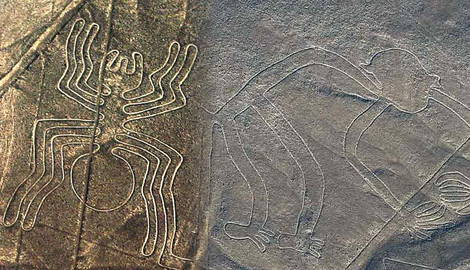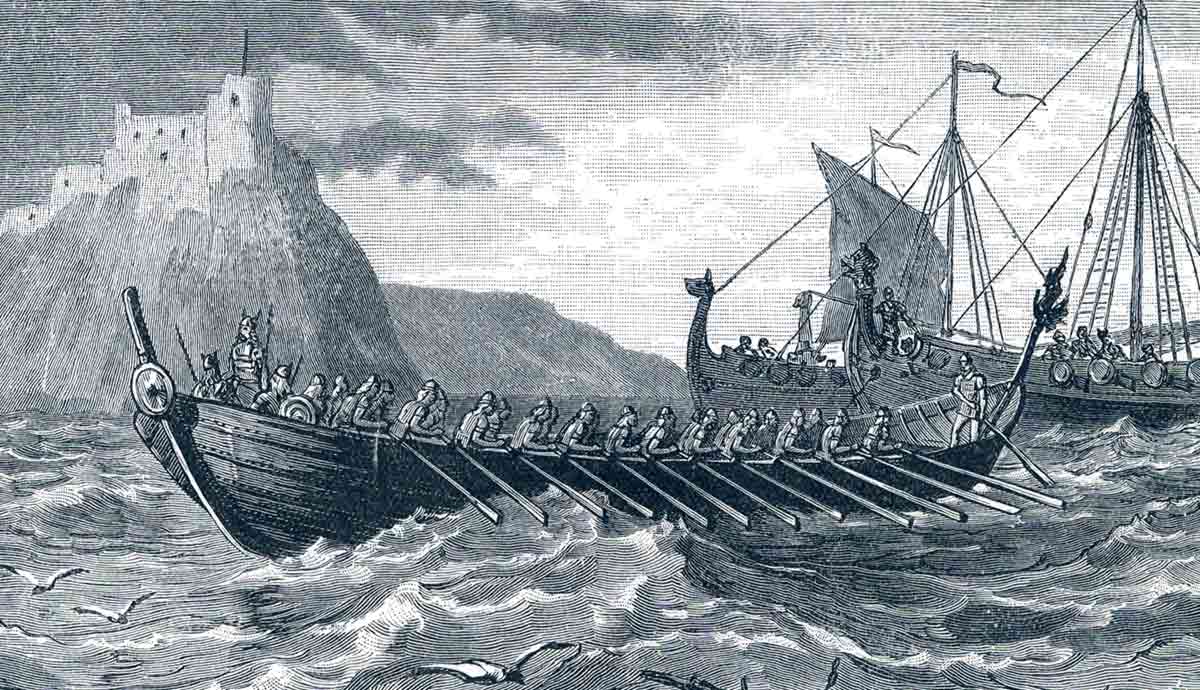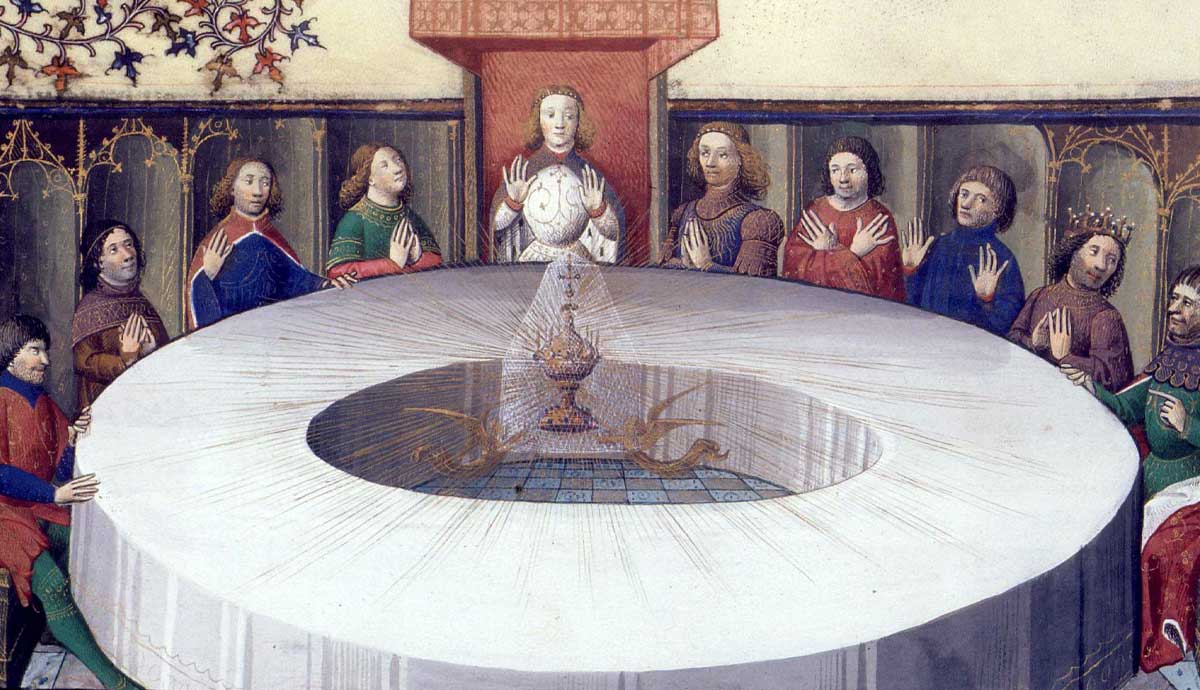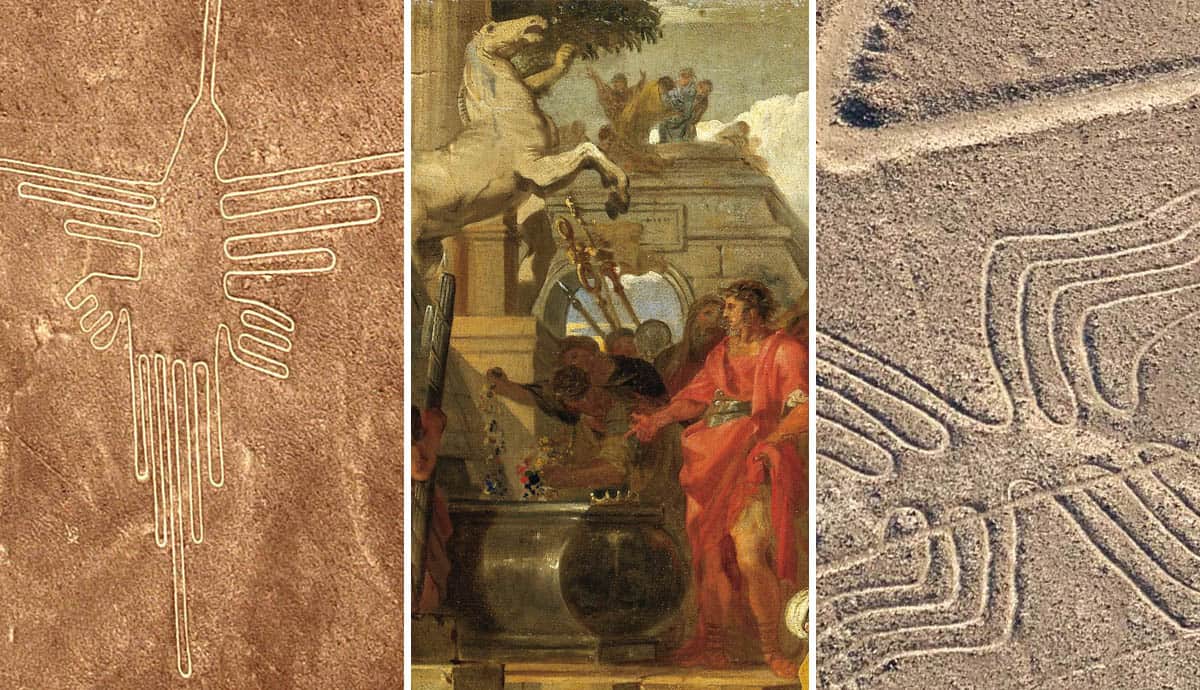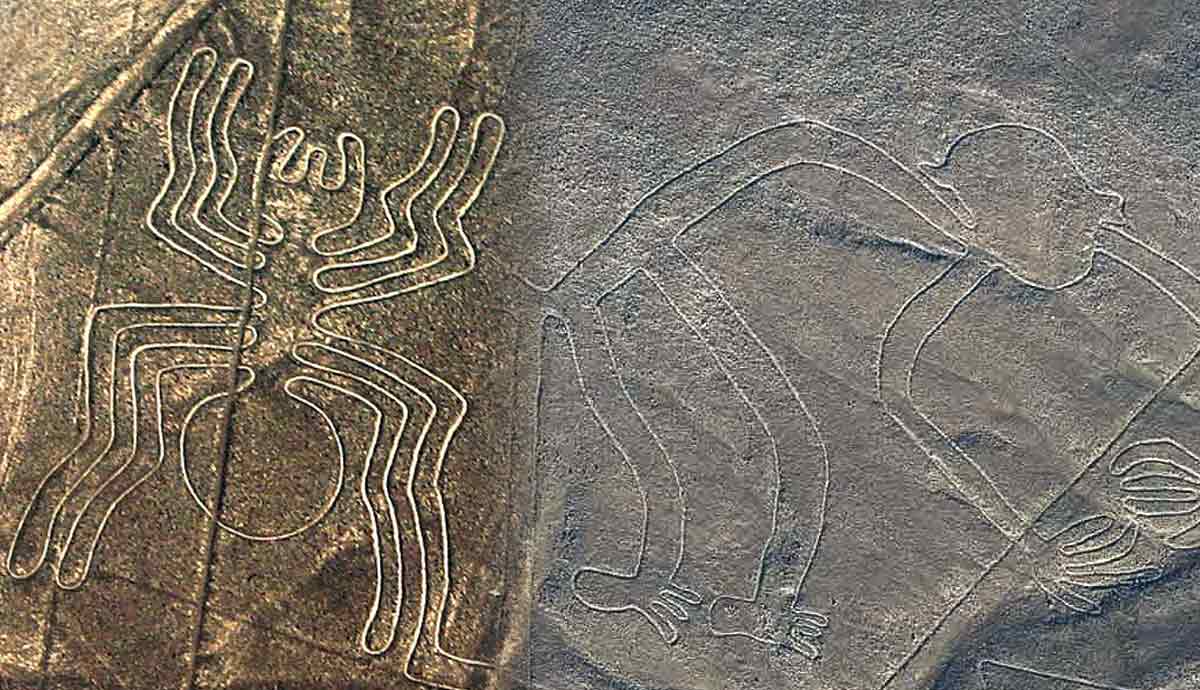
Nestled in the Nazca desert in southern Peru, the group of geoglyphs popularly called the Nazca Lines fascinates history enthusiasts worldwide. Displaying geometric, animal, and humanoid forms, these glyphs stand out among other archaeological finds due to their sophisticated design and the technological skills needed to create them. While the purpose of the lines is not yet completely clear to scholars, the meaning behind these glyphs seems to range from astronomical markers to symbols of life and fertility in the harsh desert environment.
The Nazca Lines: What Do They Mean?

In 1940, American historian Paul Kosok was studying the ancient irrigation systems of pre-Columbian Peruvian societies when he came to an unexpected conclusion: the glyph he was studying had the shape of a bird. Upon closer examination, Kosok came across another intriguing aspect: its lines converged on the horizon at the southern hemisphere’s winter solstice.
Kosok is credited as the first scholar to deeply study the Nazca lines. His work opened the doors for other researchers, including historians, archaeologists, and mathematicians, who have been deeply engaged in analyzing their peculiar shapes and intriguing symbolism ever since. Although understanding their purpose is a challenging task, recent conclusions point toward the use of the lines as astronomical markers intended to mark the position of the sun and other celestial bodies on significant dates.
But the meaning of some of the most peculiar shapes is still debatable. Whether the glyphs displayed particular astronomical alignments or represented figures of ceremonial or religious importance, the lines offer clues to the Nazca people’s complex worldview, reflecting the relationship between their civilization and the environment. Often displaying animals that are not typical of the desert environment, the lines potentially hint at the connection of the Nazca people with other surrounding civilizations. Or perhaps there is a symbolic meaning to the animal and humanoid figures drawn in the sand.
1. The Spider

The Spider geoglyph measures about 46 meters (151 feet) in length and displays an impressively precise design and almost perfect symmetry. A constant distance is maintained between its concentric lines, connecting to form a web-like pattern and hinting at the impressive technical, mathematical, and geometric skills of the ancient Nazca people.
The meaning of the glyph is still debated. The spider was often associated with fertility and water in ancient Andean cultures, as they are often seen near rivers and water sources. In an arid environment such as the Nazca desert, the representation of this symbol could have been created as a way to attract fertility to the harsh landscape.
Astronomer Phyllis Pitluga discovered through a series of computer-aided studies of star alignments that the Spider is a perfect anamorphic diagram of the constellation Orion. The straight lines of the figure seem to follow the changing declination of the stars in Orion’s Belt, meaning that the glyph could have been used as an astronomical marker.
2. The Tree

The Tree geoglyph stands out due to its relatively simple but powerful form, possibly representing themes such as life, growth, or the connection between earth and sky. It is considered by some researchers one of the most visually captivating and symbolically intriguing Nazca lines.
Trees, though scarce in the desert region, are found in cultures worldwide as a symbol of vitality and nature’s cycles. In the arid Nazca environment, the Tree may have symbolized the hope for rainfall or been a representation of the underground aquifers that were critical for surviving in the desert. It is a connection between the spiritual and physical world, representing the ideas of life itself, growth, and regeneration.
3. The Astronaut

The Astronaut geoglyph is one of the most enigmatic and controversial figures among the Nazca lines. Unlike many of the other animal and geometric designs, this glyph features a humanoid figure with a large head, round eyes, and what appears to be an outstretched arm. The name comes from the fact that it resembles a figure wearing a helmet, leading to various theories and interpretations about its origin and meaning, which often rely on pseudo-scientific research.
The glyph is about 32 meters (105 feet) long and is carved on the side of a hill. Unlike many of the other lines—which are best viewed from above—the Astronaut can be seen from a lower vantage point. Its particular location also makes this glyph unique.
Theories on the meaning of the Astronaut range from astronomical interpretations to religious figures. It is thought to represent a shaman or priest who is capable of acting as an intermediary between humans and the divine and connect with the spiritual world. This would explain the Astronaut’s apparent “otherwordly” aspect.
4. The Dog

With straight and parallel legs, wide-open mouth, and upright ears and tail, the Dog glyph is one of the lesser-known figures among the Nazca lines—which does not make it less intriguing. About 50 meters (164 feet) long, the glyph is one of the smallest of the lines, but its form is immediately recognizable.
What makes this figure particularly interesting is that, at this time, there was only one native breed of dog in Peru: the Peruvian Hairless dog. As the shape of the Dog glyph is distinctive from this native breed, it necessarily represents either an earlier breed—an ancestor of the Peruvian Hairless, for example—or a dog found among neighboring civilizations. Whether this glyph represents a remembered ancient dog breed or is another indication of the contact between the Nazca people and other societies is still unclear.
5. The Whale

The depiction of a marine creature makes the Whale one of Nazca’s most unusual designs, in stark contrast with the arid environment. Measuring approximately 65 meters (213 feet) in length, the figure appears to show the distinctive shape of the killer whale (Orca): long body, prominent head, and dorsal fin.
Despite being located far from the coast, the Nazca people likely had contact with the ocean through trade routes or travel. Therefore, the placement of this particular design in the desert could symbolize a connection between land and sea. Given the symbolic role that animals played in Nazca rituals, the Whale may have been a sacred figure in ceremonies. It could also potentially represent a mythical creature associated with the gods or part of water-related fertility rites.
6. The Monkey

Known for its playful and exaggerated design, the Monkey geoglyph is one of the most iconic Nazca lines. It measures an impressive 90 meters (295 feet) in length, which also makes it one of the largest of the lines. Featuring a peculiarly detailed form with a coiled tail, the Monkey stands out due to its highly stylized body, with exaggerated long arms and wide, playful eyes.
Monkeys are not native species of the Nazca desert, but rather common in the tropical rainforests and inland Peruvian jungles. This suggests that the Nazca people were potentially in contact with distant regions, possibly through trade or travel.
In some cultures, monkeys are a symbol of mischief and cleverness, which might explain the exaggerated and almost whimsical design of the Monkey geoglyph. In fact, it is a popular belief that the Monkey’s playful posture was a representation of lighthearted moments, fun, and laughter.
The meaning of its spiral tail is intriguing, as scholars debate whether it could symbolize the movement of celestial bodies such as the sun or the stars. Like other lines, the positioning of the Monkey aligns with important astronomical events like solstices or equinoxes, which were crucial for agricultural planning. In fact, the spiraling pattern is one of the inspirations for Peru’s official logo, with the spiraling letter “P.”
7. The Condor

One of the largest and most majestic of the Nazca lines is the Condor. Roughly 135 meters (443 feet) in length, this geoglyph depicts a soaring bird with widespread wings and long lines that create the illusion of flight. The impressive details of the Condor make it stand out as one of the most elaborate of the Nazca lines, which again reveals the sophisticated skills of the Nazca people.
The condor is a powerful symbol in Andean cultures, recognized for its strength, size, and link to the sky and the spirit world. The flight of the condor can be seen as a symbolic connection between earth and sky, associating it with the sun, the mountains, and the afterlife. In Nazca, the creation of this geoglyph may have been part of rituals related to spiritual journeys or prayers to the gods.
In Archaeoastronomical interpretations, the elongation of the condor, as well as the lines on its wings, are suggested to have been tools to track the movement of the sun and stars for agricultural and ceremonial purposes.
8. The Hummingbird

The Hummingbird geoglyph is one of the most iconic and finely detailed designs among the Nazca lines. About 93 meters (305 feet) in length, this geoglyph captures the delicate form of a flying hummingbird, standing out among the hundreds of geoglyphs in the southern Peruvian desert.
In many cultures, the hummingbird’s incredible speed and agility make it a symbol of vitality and energy. The Nazca people may have chosen to display this animal as a representation of these aspects. As creatures that feed on nectar, these birds are linked to plants and the cycles of growth and renewal, crucial for the arid desert environment. The Hummingbird geoglyph may have been created as part of fertility rituals aimed at ensuring the health of crops and successful harvests.
Puzzling Out the Nazca Lines

Whether the lines are purely an expression of the Nazca people’s worldview or if they served as star-tracking tools and astronomical markers, one thing is certain: determining the meaning and purpose of these glyphs is a challenging task.
As puzzling as they are fascinating, the Nazca lines serve as a reminder of the richness of those who created them. Their complex, often symmetrical designs display the advanced technological sophistication and geometrical skills of the ancient Nazca civilization, and are a must-see for enthusiasts of South American history and archaeology.
